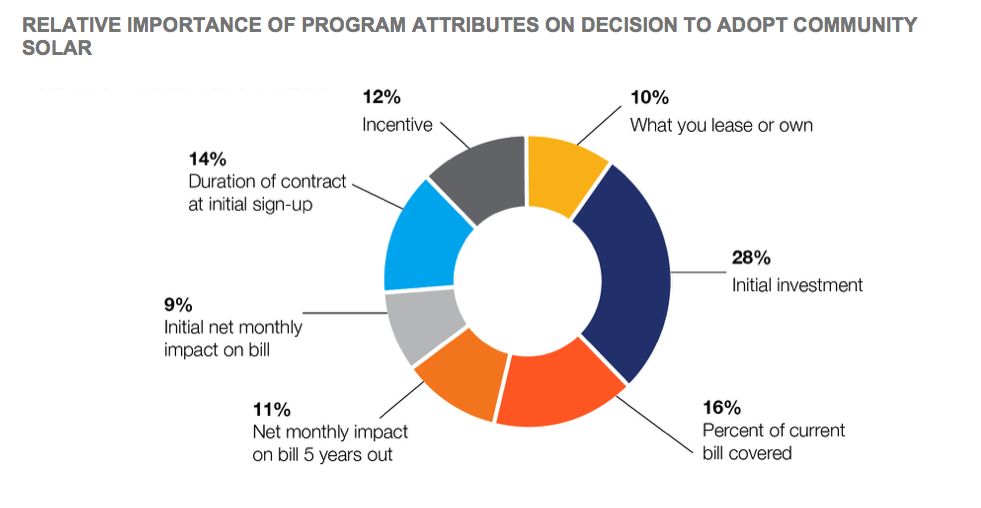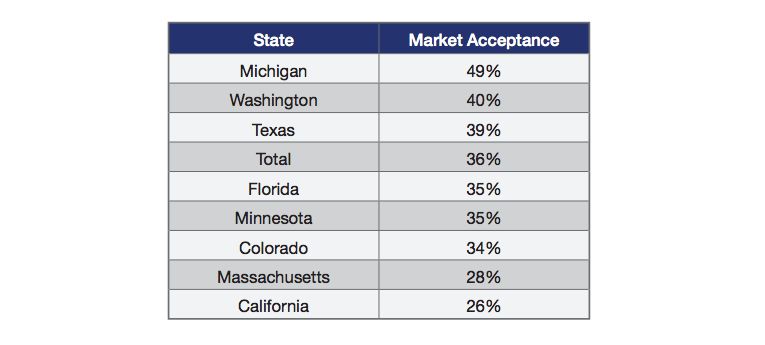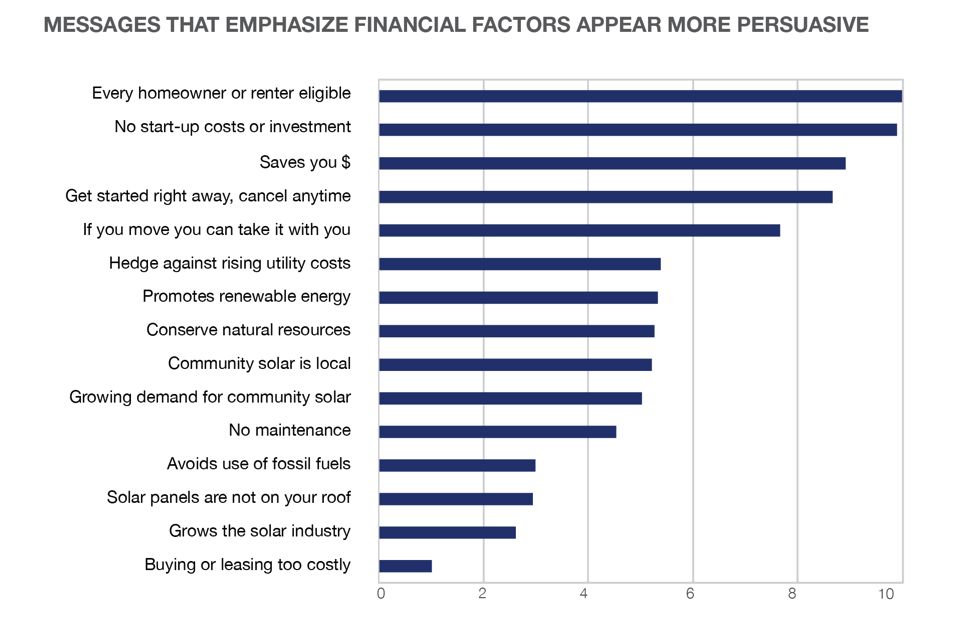Community solar holds a lot of promise. But many programs are mired in challenges.
One issue: many utilities and developers have had trouble fully engaging customers. Community solar programs are different from familiar usage-based energy pricing models and are not easily understood by the general public. Hence, providers are faced with the unexpected need to spend more time and money on marketing. There seems no clear single path to success.
As a result, GTM Research's yearly projections for U.S. community solar development through 2020 are roughly 20 percent lower than they were in 2015.
To ensure community solar companies save money by marketing their programs right the first time, Pacific Consulting Group (PCG) created a model that takes the guesswork out of program rollouts. By evaluating forecasted market responses to over 375,000 possible community solar program designs and promotional pitches, PCG found the approaches that will resonate with potential customers.
The results, briefly summarized below, indicate that there will be significant demand for programs that have customer-friendly designs and strong economics, and which are marketed with specific communications strategies. A more detailed discussion of the findings can be found in a recently published SEPA report, Accelerating Adoption of Community Solar.
The study was based on a survey of 884 respondents from eight states. Respondents were screened to assure that they did not already have rooftop solar, that they had some knowledge of alternative energy options and were otherwise eligible to adopt community solar if it were offered to them. A proprietary technique based on consumer choice modeling, proven in over 40 years of use in every major industry, was used to measure underlying consumer preferences for optional program features and messaging. An interactive market simulator was then constructed to predict what features were most important and would result in the greatest market penetration.
Program design makes a big difference in attracting subscribers
Programs that minimize initial investment, allow consumers to reduce a large portion of their bill, and do not have binding contracts result in four times greater projected market penetration than those that do not adequately provide these options. The relative importance of each program design element is depicted in the figure below.

Different markets have different forecasted market penetrations
PCG tested market acceptance of a sample program design in eight states. As shown in the table below, forecasted penetration for this design varied greatly across states -- 49 percent penetration in Michigan compared with only 26 percent in California. These market simulation results underscore the value in understanding local market needs and preferences in designing and promoting community solar.
Yvonne Nomizu, CEO of PCG, says her staff can complete a local market assessment and customized model in about a month.

Promotional strategies matter
Media type, messaging, and sources of information are all important in attracting customers. Using the same proprietary modeling technique, messaging (38 percent derived importance) is shown to be the most important communications campaign factor. Of the marketing messages tested, those emphasizing program eligibility and economic factors are generally more persuasive than environmental ones, as seen in the figure below.

In addition to messaging, media types and sources of the information (36 percent and 26 percent derived importance, respectively) also influence customer opinions and choice. Media that directly target individual consumers are more persuasive than mass media like radio, newspapers, or social media. Organizations with expertise in the energy field are more credible and influential sources of information.
The path forward
Utilities and developers can use PCG’s model to “get it right the first time” with community solar offerings. Armed with quantitative market forecasts of optional program configurations and communications campaigns, providers can develop and test creative ideas without risking costly failures, fine-tune existing concepts to maximize appeal, and engage constructively with both internal and external stakeholders.
This market-driven approach will expedite planning -- saving time and money -- and ultimately will deliver better program performance.
***
Pacific Consulting Group (PCG) is a market research and service design firm specializing in customer-driven innovation. Christianne Pang is senior director of client solutions and data analytics at PCG; Tom Cooper is the director of client solutions at PCG.



